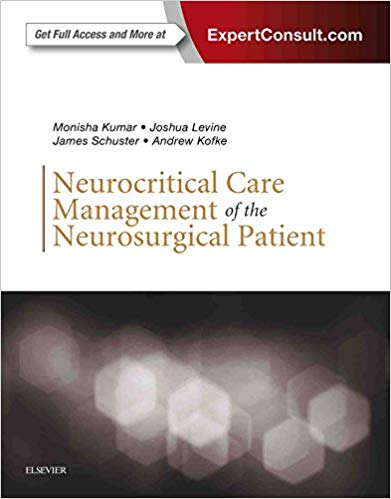This book in its first edition is a novel concept, as a collaborative approach between neurosurgeons, neurologists, physicians, neuro-anaesthetists and neuro-interventionalists. It aims to facilitate mutual understanding of the various specialists’ contribution to patient care in the settings of neurocritical care and the neurosurgical operating theatre.
The book is divided into 6 sections. Section 1 reviews core anaesthetic principles: sections 2-5 concentrate on different neurosurgical procedures and sequentially describe neuroanatomy, technical steps of the procedures, peri-operative considerations, anaesthetic choices, post-operative complications and post-operative management for each procedure. Section 6 deals exclusively with potential ICU complications after neurosurgery.
Section 1 (Neuroanaesthesia and Perioperative care) is the weakest section of an otherwise very well edited book. Billed as an outline of core principles in Neuroanaesthesia, it comes across as rather cursory. The “Clinical Pearls” offered seem commonplace. But, perhaps a comprehensive review was beyond the scope of this volume.
From then on, however, matters improve vastly. Sections 2-5 concentrate on different craniotomies (for vascular, oncologic, epilepsy, functional and trauma neurosurgery as well as radiosurgery), spinal surgery, endovascular neurosurgery and special procedures. These chapters are well structured following a consistent outline, offering great clarity. Throughout the book, illustrations are well chosen to underline points made in the text and are of excellent quality with accurate labelling. Some of these illustrations are reproduced from such gold-standard books as Netter’s Atlas of Neuroscience and other well-known neurosurgical textbooks. Every chapter has “Key concept” boxes which give a useful overview, although the “Clinical Pearls” refer to rather basic points, rather than sparkling wisdom to those with some prior knowledge. The reference lists are exhaustive and up-todate, enabling targeted further reading if desired.
Three chapters stand out as being particularly well written: (1) Pituitary Surgery for its in-depth discussion of peri-operative considerations and post-operative management, (2) Trauma Neurosurgery for referencing up-to-date trials such as RescueICP and (3) Spinal Trauma for emphasising the importance of early prevention of sequelae of spinal cord injuries. The only slight criticism of this part of the book would be that the text is occasionally somewhat dogmatic, for instance on the indications of ICP monitoring or on stating the absolute preference for a left-sided approach in anterior cervical discectomy.
Section 6 (Specific Intensive Care Unit Complications) seems at first glance a little short, but does actually provide a good overview of the most commonly encountered neuro-ITU problems.
Overall, the style of writing is engaging and easy to follow, but UK readers of a sensitive disposition might occasionally be put off by American expressions. Although the book is aimed at anaesthetists and neuro-intensivists, neurosurgical trainees will find it a useful resource to prepare for surgical assisting. Their colleagues in medical neurology or rehabilitation might find it useful for reference if attending to a patient as part of an inter-disciplinary team. Priced at £108.99, the book is more expensive than its competitors (although the cost includes access to an ebook for downloading)
